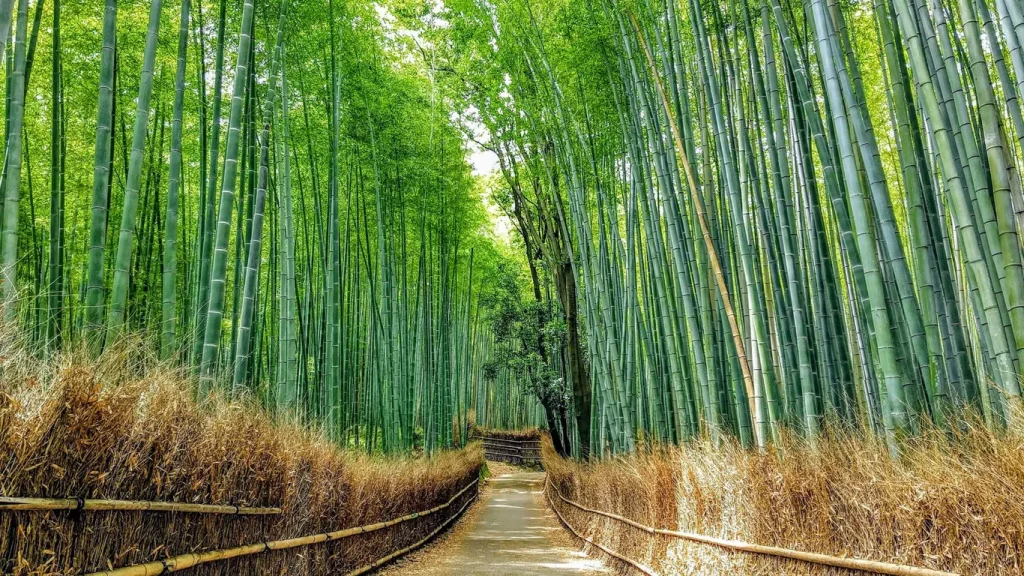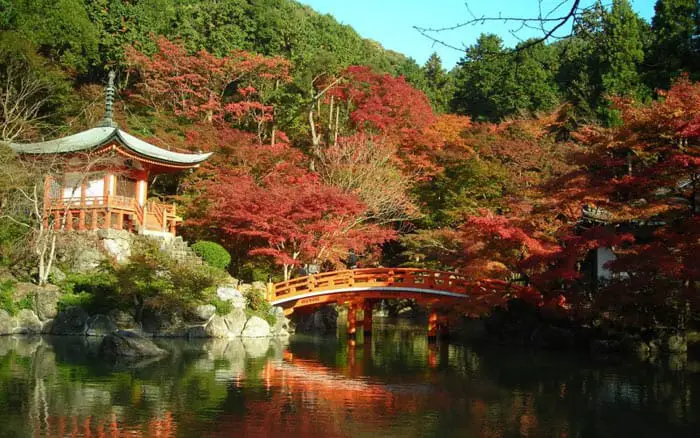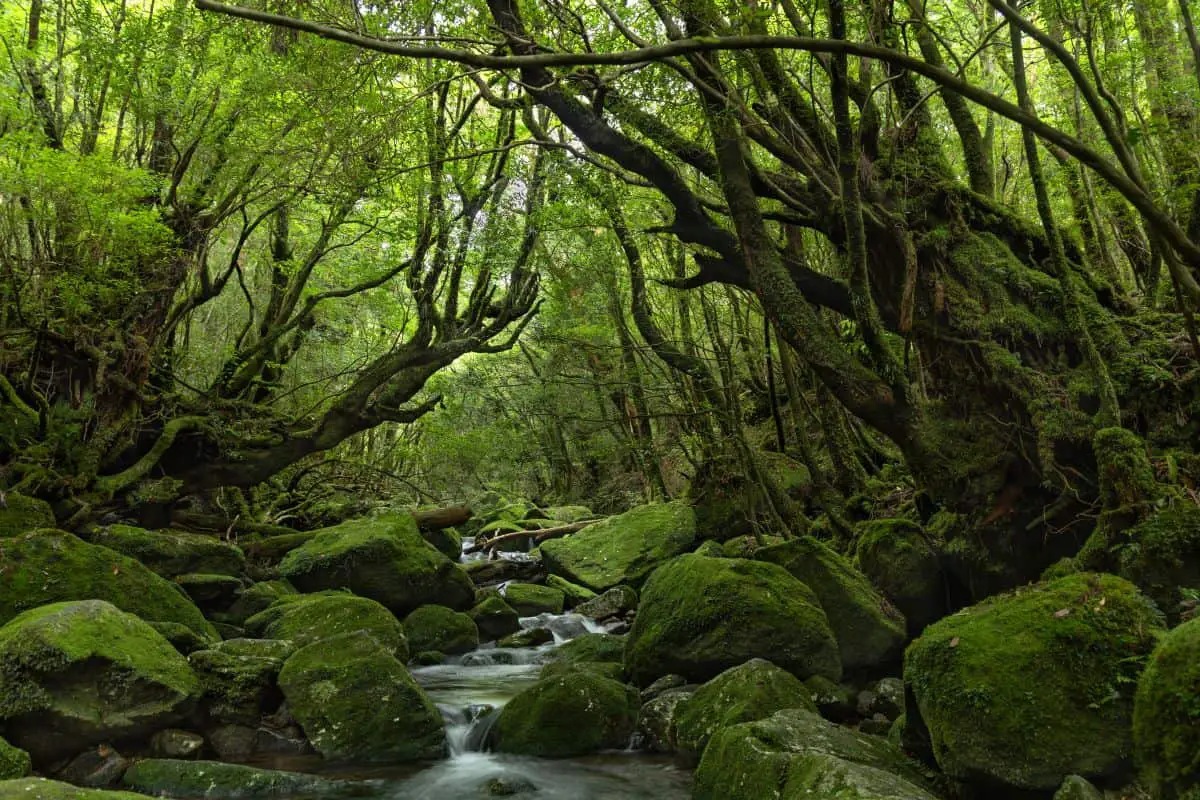Embark on a captivating journey through Kyoto, Japan’s historic gem. Immerse yourself in the enchanting blend of ancient traditions, vibrant cultural landmarks, and serene landscapes. Explore Kyoto’s rich heritage, from iconic temples like Kinkaku-ji to the historic streets of Gion, unveiling the essence of this timeless city.
Thank you for reading this post, don't forget to subscribe!Cultural and Historical Heritage of Kyoto
Kyoto, nestled in the heart of Japan, stands as a living testament to the nation’s rich cultural and historical heritage. Revered as the former imperial capital for more than a millennium, Kyoto embodies the essence of traditional Japanese art, architecture, and spirituality.

The city boasts an unparalleled collection of historic landmarks, each narrating a story of bygone eras. One such jewel is the Fushimi Inari Taisha, a Shinto shrine renowned for its iconic vermillion torii gates that form a mesmerizing pathway. Another gem is the Kinkaku-ji, the Golden Pavilion, a Zen Buddhist temple adorned in gold leaf, reflecting on the serene waters of its surrounding pond.
Kyoto’s historic streets, like the Higashiyama District, invite visitors to step back in time. The preserved wooden machiya houses, traditional tea houses, and cobbled stone pathways create an ambiance that whispers tales of samurais and geishas.

The city’s cultural richness extends to its vibrant festivals, such as the Gion Matsuri, one of Japan’s most famous celebrations. Witnessing the elaborate floats parading through the streets is like stepping into a living museum of Kyoto’s cultural heritage.
Kyoto is also home to countless temples, each with its own distinct charm. The Ryoan-ji Temple, famous for its Zen rock garden, provides a tranquil space for contemplation, while the Kiyomizu-dera offers panoramic views of the city from its wooden terrace.
The traditional arts flourish in Kyoto, with tea ceremonies, ikebana (flower arranging), and traditional theater performances deeply ingrained in its cultural fabric. Visitors can immerse themselves in these ancient practices, gaining insight into the refined aesthetics that define Kyoto’s heritage.
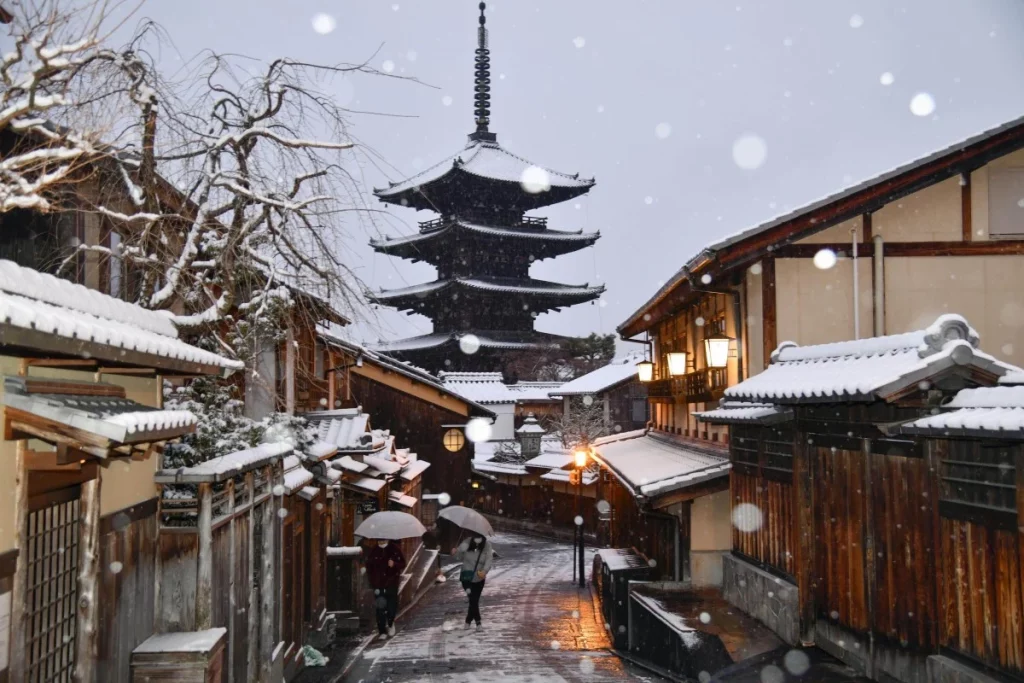
In every corner of Kyoto, from its historic alleys to its grand temples, the city breathes life into Japan’s cultural legacy. It is a destination where the past gracefully dances with the present, inviting travelers to unravel the layers of history woven into the fabric of Kyoto’s enchanting tapestry.
As an ancient capital, Kyoto is a truly ancient city to this day. There are no skyscrapers or modern buildings here. In return, the ancient capital still preserves many historical and cultural relics, both material and spiritual (intangible). Kyoto is the embodiment of ancient, legendary Japan with a slow, peaceful, and filial pace of life. It is estimated that more than half of Japan’s temples, shrines, and ancient mansions are concentrated in Kyoto. The houses are low, hidden and interwoven with fruit trees, narrow streets, many bicycles, few cars; People are generous and have a characteristic of liking to walk.
Exploring Landmarks in the Capital of Kyoto
Kinkaku-ji – The Golden Artistry of Kyoto.

Kinkaku-ji is also known as Rokuon-ji, Deer Park Pagoda, Deer Park Pagoda, Golden Gate Pagoda… built in 1397. Kinkaku is one of the unique architectural works in the temple with a 3-story building reflecting the down to Kyoko-chi Lake (also known as Kinh Tri). Initially, only the walls of the 2nd and 3rd floors were plated with pure gold. The name Gac Vang Pagoda has such an origin. Currently, the entire three-story wall, both inside and outside, is plated with gold.
On beautiful sunny autumn afternoons or full moon nights, the shiny golden color flows onto the jade water surface, creating a mysterious and mysterious watercolor painting. When visiting the pagoda, the space is filled with sacred, unreal golden light. When the lights are on, Kinkaku stands out even more, bright yellow in the blue sky.
The sophistication and sophistication expressed through the impressive position between the main yellow color of the pagoda, the pure blue color of the lake, the endless green color of the trees, the immense blue color of the sky, has a captivating charm. . Kinkaku’s landscape changes not only with each season but also each month and day; even every hour. Every moment has its own beauty, splendor, elegance, quietness, discreetness…
Sanjusangendo – The Pagoda of 1,001 Buddha Statues.

Sanjusangendo – also known as Rengeo-in or Pagoda of 1,001 Buddha statues with a thousand hands and thousand eyes, built in 1164. Janjusangen do – meaning 33 compartments with hundreds of columns – is 125m long, considered the longest wooden building in the world. It looks rustic and rustic on the outside, but inside there are many surprises. The pagoda has 1,000 life-sized Buddha statues, made of cypress wood, lacquered, plated and plated with gold. Legend has it that each statue can save 1,000 sentient beings. Yasaka Shrine has layers of Japanese lanterns hanging densely under the temple roof.
Nijo Castle: A Timeless Fortress of Elegance in Kyoto
Nijo Castle, located in the heart of Kyoto, Japan, is a historical treasure that transports visitors back to the Edo period. Built in the early 17th century, the castle is a stunning example of traditional Japanese architecture and design, surrounded by beautifully landscaped gardens.

The castle complex is renowned for its “Nightingale Floors,” which emit a distinctive chirping sound when walked upon. This ingenious feature served as a security measure, alerting occupants to the presence of potential intruders. As you explore the corridors and rooms of the Ninomaru Palace, you’ll be captivated by the intricate craftsmanship and detailed paintings on sliding doors.
The Ninomaru Garden, a classic Japanese landscape garden, provides a serene retreat with its seasonal blooms, ornamental stones, and tranquil pond. Cherry blossoms in spring and colorful foliage in autumn enhance the enchanting atmosphere of the castle grounds.
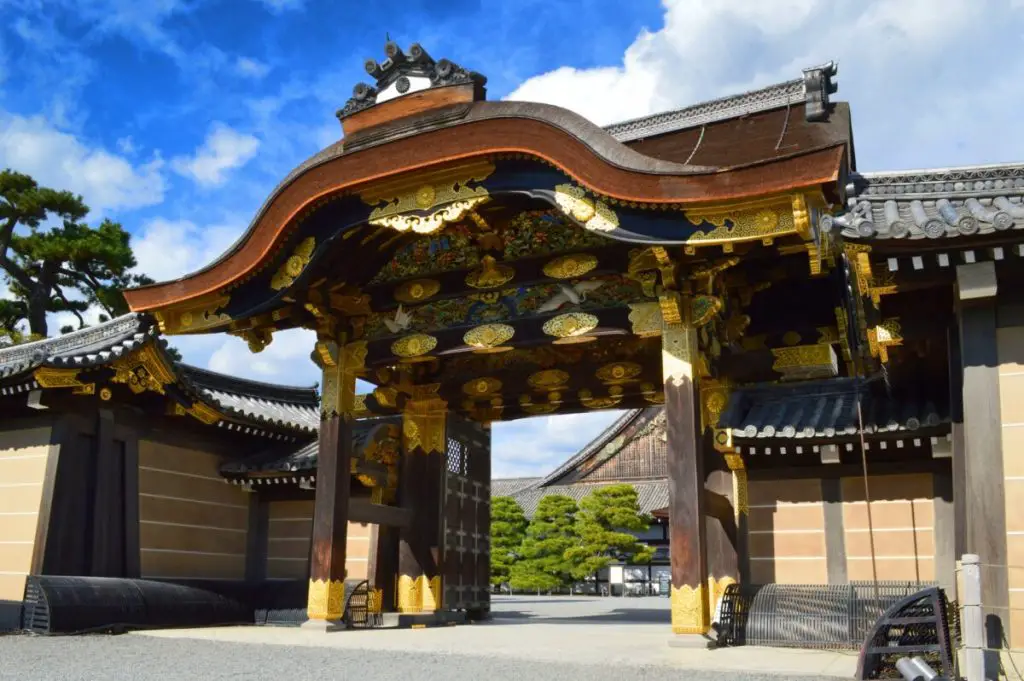
The Honmaru Palace, another integral part of Nijo Castle, showcases the opulence of the Tokugawa shogunate. Lavish tatami rooms adorned with gold leaf and exquisite artwork reflect the power and prestige of the era.
Nijo Castle is designated as a UNESCO World Heritage Site, underscoring its cultural significance. The Karamon Gate, adorned with intricate carvings, and the majestic Ro-mon Gate further contribute to the castle’s grandeur.
Yasaka Shrine: Embracing Tradition and Spirituality in Kyoto’s Heart
Yasaka Shrine, situated in the heart of Kyoto, Japan, is a vibrant testament to the city’s rich cultural heritage and spiritual significance. Originally established over 1,350 years ago, Yasaka Shrine, also known as Gion Shrine, stands at the eastern end of Shijo-dori, one of Kyoto’s bustling streets.
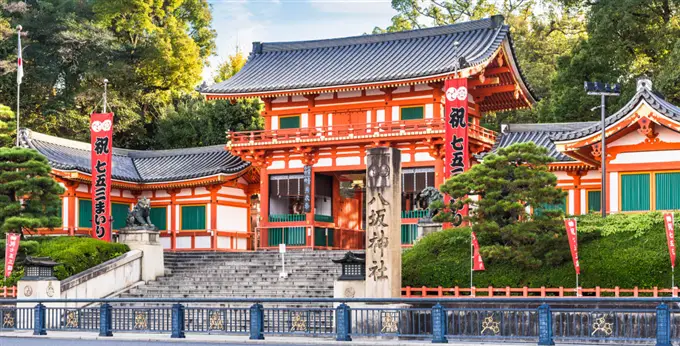
The shrine’s main gate, known as the Ro-mon, welcomes visitors with its impressive stature and intricate architectural details. As you enter the precincts, you’ll be greeted by a path lined with lanterns, creating a magical ambiance, especially during the annual Gion Matsuri, one of Japan’s most celebrated festivals.

Yasaka Shrine is closely linked to the Gion district, renowned for its traditional wooden machiya houses and as the historic home of the geisha. The shrine is a central hub for cultural events and festivities, drawing locals and tourists alike.
Yasaka Shrine serves as a bridge between ancient traditions and modern life, embodying the essence of Kyoto’s enduring charm. Whether exploring the vibrant Gion district or seeking spiritual solace, Yasaka Shrine stands as a timeless symbol of Kyoto’s cultural and historical tapestry.
Ginkaku-ji: A Tranquil Haven of Zen Beauty in Kyoto

Ginkaku-ji, also known as the Silver Pavilion, is a sublime Zen temple nestled in the eastern hills of Kyoto, Japan. Built during the late 15th century, this cultural gem showcases a harmonious blend of architecture, nature, and cultural heritage.
Surrounded by the lush Higashiyama mountains, Ginkaku-ji offers a serene escape from the urban hustle. The moss-covered paths, stone bridges, and carefully placed flora make each step a journey through a meticulously curated natural canvas.
Ginkaku-ji represents not only architectural brilliance but also a profound connection to Japanese aesthetics and philosophy. Visiting this historical and cultural landmark provides a captivating glimpse into the serene world of Zen Buddhism, encapsulated within the elegance of Ginkaku-ji and its picturesque surroundings.
In addition, in the heritage complex of the ancient capital of Kyoto, there are many other relics such as: Kamo Temple; To Pagoda; Daigo Temple; Ninna Temple; Byodo Zen Monastery; Ujigami Shrine; Kozan Temple; Saiho Temple; Ryoan Temple; Nijo Castle….
